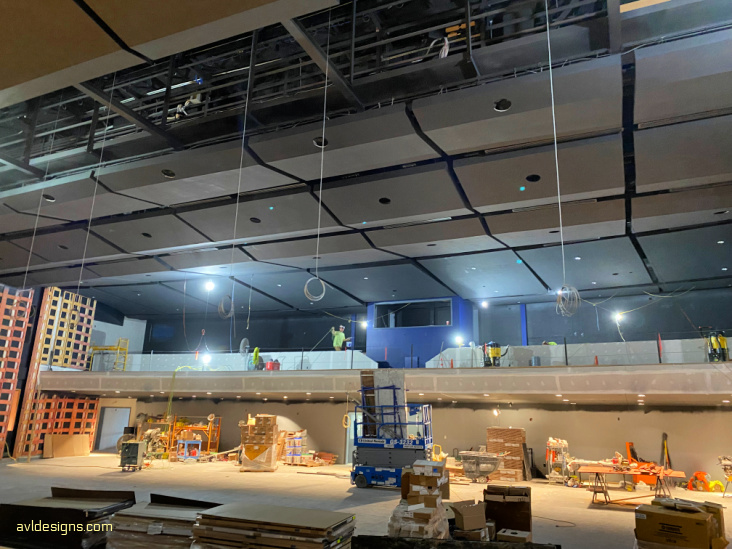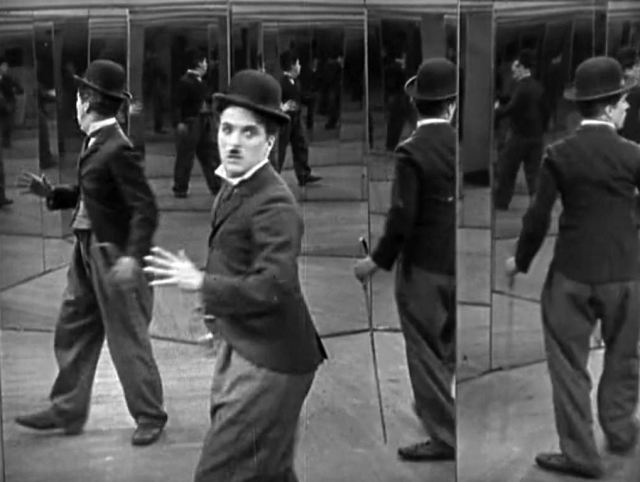This advice is primarily for theater folks who work in school districts. Are your auditoriums being renovated? It will be helpful for you to be aware of the design and bid process that you are entering into before things get too far along.

First, there will be an architect on board and probably some engineering firms, as well. If part of the scope of the project includes stage rigging or lighting or audio or video or any of the technical parts of the auditorium, who will design that work? This is a very important consideration.
There are two paths you could take.
- On one path, the architect hires a theater consultant for his team who stays with the job from get-go to the tail end, making sure everything is done properly. That includes assuring that it is set up correctly and seeing to it that people are thoroughly trained on all the new equipment. The theater consultant is there, representing you the client, to make sure that everything goes the way you want it to.
- The alternate path that they could take does not include a consultant and, instead, you get “vendor specs.” Now vendor specs are an interesting breed…this is how it works:
You hire an architectural firm which also has an engineering firm working for them. Typically, the electrical engineer on the team gets tasked with doing audio, video, and theatrical lighting. Admittedly, there are some electrical engineers who actually know something about this work but there are many who don’t.
So what exactly is a “Vendor?”
The electrical engineers who don’t have those skills set get a “vendor” involved. A vendor is a third party who often does have know-how, but they also sell equipment. That makes their role a little odd. Vendors will not be paid for their time in specifying the project. In a public bid market, they may or may not even win the job. It’s less than a 50/50 chance, depending on how many bidders are participating. So, they spend time specifying something that may make them no money at all. There is not a lot of incentive in that to follow up later.
As the client you should understand that the way a vendor spec works is the vendor, who actually does have some skill set, provides some information to the engineer who then transfers that to his drawings and specifications. Now, in some cases it may be done fairly well. In some cases, it may be very, very basic.
We’ve seen bids produced as simple as one drawing for an entire audio system with no information of how to actually connect things, where speakers should be located, how they should be mounted and aimed, etc. Video projection often is left with no indication of where the inputs and outputs are. We have seen theatrical lighting systems labeled as an “LED par fixture”, and that’s as far as the description goes. The whole spec can be generic. The chances of you getting what you truly want can be slim.

The complaint I have with vendor specs is two-fold:
- It is wasting the time of someone who may never get paid for their participation which, as a consultant, I just object to. It is un-American. As consultants we get paid for our involvement. And I think that is the way life should be. If, however, a vendor does get paid for their work, they are not supposed to bid that work.
- If a vendor specifies a system the next issue becomes “if they lost the bid, who reviews his submittals after bid and someone else wants to substitute products?”
I had this happen on a job recently, we created a design for a school district where we did all of the acoustical work for all of their auditoriums, and they wanted high quality acoustics in their auditorium. So, we made them pretty reactive meaning that anything that happens in the room is very audible.
A different designer did the theatrical lighting. Our design included the stage shell. We asked the engineer to use a specific light in the stage shell because we were concerned about noise over the orchestra.
So, we had our fixture specified for the part of the job we cared about, the rest of it was handled by the engineer. Now to his credit, he worked with a manufacturer’s representative (ie. Vendor) who gave him good information and he specified some really good fixtures for the rest of the lighting system. The problem came in when the project was bid and the low bidder substituted everything, including the shell fixtures.
We chose these lights for a reason.
The LED lighting that was in our original design had been carefully selected for two aspects: one was color quality, and the other was fan noise. The substitute that ultimately was accepted by the electrical engineer was very noisy. This happened because he didn’t know any better, He was going by cut sheets, which don’t refer to noise.
After the lighting fixtures were installed, we were contacted by the owner since we had designed the acoustics. They wanted to know why the lights were so noisy. It was because no one ever showed us the submittal on what was being substituted. The engineer was dealing with us as if we were a vendor and they don’t contact vendors on substitutes.
When we found out what they had done, we had to explain “the rules of the road.” The LED lights that they had accepted could indeed be run quietly only if they were willing to accept 60% light output. With those particular lights, that is the only way to get the fan noise low enough.
Vendors are pretty much in it to make the sale. This is a real-life example of a vendor that made an alternate selection – his product – as a substitute in the bid so that he could do just that – make a sale. They made that sale based on lumen output, color rendering index, and other factors. There was nothing in the spec from the engineer about noise, so he didn’t consider that factor.
As consultants, all of our specs for LED lighting have specific requirements for noise, and we never would have agreed to the particular substitute that was accepted on this job. We put our 2 cents in, and the owner is now trying to figure out how they’re going to resolve the problem.
The room was designed acoustically so that you could hear nuances and harmonics. To protect these excellent room acoustics, the client will now have to accept low light output or unwanted noise in the room.
In this particular case, using vendor specs was kind of awkward. There were 2 vendors involved: the original one and the one for the substituted product. If the engineer had gone back to the original vendor’s rep asking what he thought of the substitute, he obviously wasn’t going to like it as it cuts him out of a sale.
So, both sides of that road are kind of rough. You’ve got people who haven’t been paid and lost the job. You have other people who are interested in getting paid and that happens if they make a sale. This is a scenario where lots of things can go wrong, and the client suffers.
Consultants work for YOU!
In our opinion if a customer, such as a school district, cares about the performance of all their systems in their auditorium, they need to have consultants on board that work for them, or work for the architect, and are not part of any sales organization.
That was an example of a problem with lighting. In audio, we have seen even worse situations. We have seen people take a design from a vendor which might have been somewhat well done, but then allowed substitutions of everything, including where the speakers would be located.
“Which way does it go?”
Most recently we were in an auditorium where they substituted a speaker that was completely inappropriate. Then they decided that positioning a pair in the front of the auditorium in the corners, a pair halfway down the auditorium against the sidewalls and a pair in the rear corner of the auditorium firing forward would be a really good idea. Mind you, the particular loudspeaker they had specified has its own a wacky coverage pattern to begin with.
No, this was not surround sound. These speakers were not processed, independently tuned, delayed in any manner. They were all just running in unison.
It was like an audio “hall of mirrors”!

So, it was kind of like a “hall of mirrors” effect when you got into the room. It was just bad. So, we were called in to figure out why they were hearing all these echoes in the room and we had to give them the grim news.
The problem was multi-faceted. It was not just where all the speakers had been located but what they were and how they interacted with the room. By the time we got involved, they already owned it all, had accepted it and now were stuck with it.
A word to the wise in public bid situations is that someone must specify clearly what you, as the end user, want and that person should never be one who is also selling product. They should be someone knowledgeable whose sole interest is what you, the customer, wants and not what they would like to sell to you.
Consultants do have preferences. We might like a particular audio console or lighting console but if you like a different one, as an end-user, our job as a consultant is to get you what you want, not to get you what we want.
Please Get Qualified Consultants
So be sure to have the architect get qualified consultants on board. Better architectural firms automatically do this because they know the benefit of having us on their team. With some architectural firms, you will have to force the issue. (their engineers insist to them that they know what to do…..)
There have been times that we have kind of been thrown at some architects. They didn’t want to hire a consultant, but the end user was savvy enough to insist on it. They knew from experience that they did not want to leave this part of the project to the engineer, or to a vendor.
In defense of engineers, there are some who really do have more than a hobby-interest in audio, video and lighting and that is awesome – but they are rare.
Copyright AVLDesignsInc. 2021+
Do you know we are on YouTube? Stop by and subscribe to be notified when new videos post.
